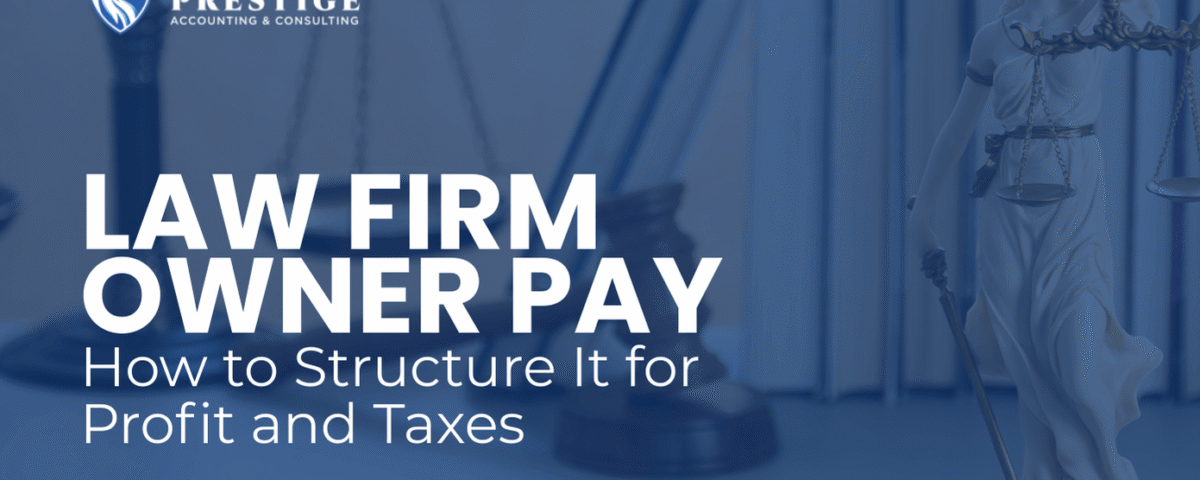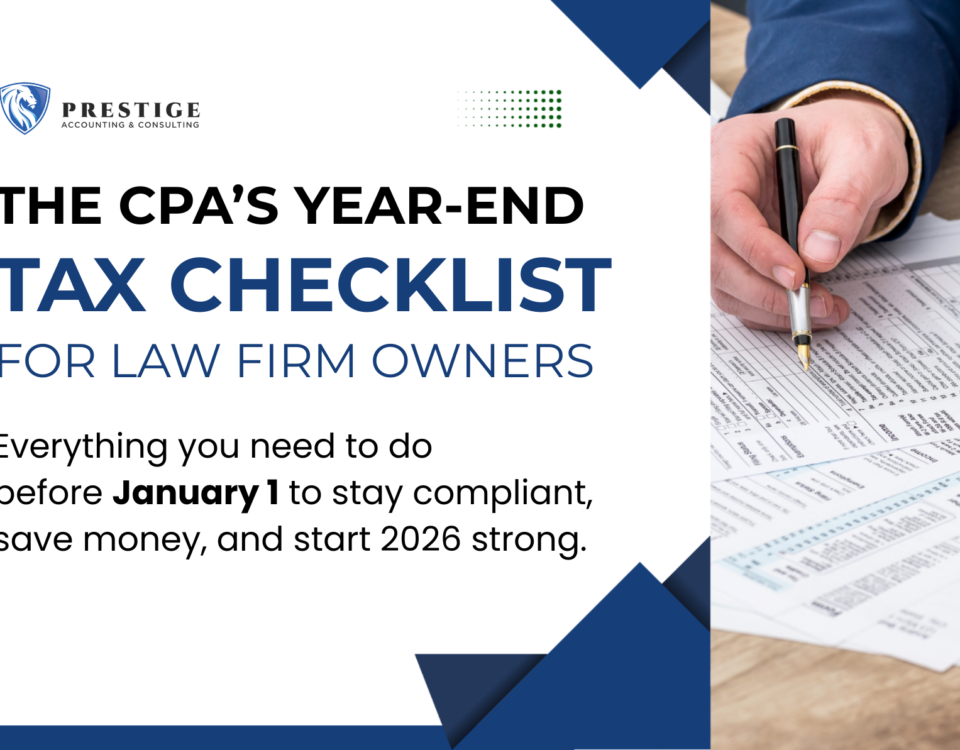
Is Your Firm Ready for Growth—or Just Running Hot?
August 26, 2025
How to Build a Financial System That Doesn’t Break as You Grow
September 2, 2025Law Firm Owner Pay: How to Structure It for Profit and Taxes
Why It Matters:
How you pay yourself as a law firm owner isn’t just a matter of preference—it directly affects your taxes, your firm’s cash flow, and your ability to scale responsibly. Poorly structured compensation is one of the leading causes of surprise tax bills, insufficient profit reserves, and compliance risks—especially for solo and small firm attorneys.
This paper explains the different methods of law firm owner compensation, how each option affects your business, and how to create a pay structure that balances personal income, tax efficiency, and firm sustainability.
The Foundation: You Are Not an Employee (Unless Your Entity Structure Says So)
Let’s start with structure. The way you’re legally allowed to pay yourself depends on your business entity:
- Sole Proprietorship or Single-Member LLC (Default):
- You cannot pay yourself wages. Instead, you take an owner draw—a non-taxable distribution of profit that still gets taxed on your personal return as self-employment income.
- Partnership (or Multi-Member LLC):
- Partners take guaranteed payments and/or draws based on the partnership agreement. These are subject to self-employment tax.
- S Corporation (or LLC taxed as S Corp):
- You must pay yourself a reasonable salary through payroll and may also take distributions from profit. The salary is subject to payroll taxes; distributions are not—if properly structured.
Bottom line: Entity choice drives your options—and your responsibilities.
Compensation Models and Their Tax Implications
1. Owner Draws (Sole Proprietor, LLC, or Partnership)
- Not considered a business expense
- No payroll tax required at the time of the draw
- Still taxed as income on your personal return via Schedule C or K-1
- No tax withheld unless you make estimated payments
Risk:
Owner draws feel “easy,” but without regular tax planning, they often result in underpaid taxes by year-end—plus surprise liabilities and penalties.
CPA Tip:
Set aside 25%–30% of every draw into a separate tax savings account. Automate this if possible.
2. W-2 Salary (S Corporation or LLC taxed as S Corp)
- Salary is subject to FICA and Medicare (about 15.3% combined)
- Treated as an ordinary business expense—reduces your firm’s taxable profit
- IRS requires it to be “reasonable compensation”
Risk:
Paying too little raises IRS red flags. Paying too much inflates your payroll taxes unnecessarily. The IRS often audits S Corps when owners take low salaries and high distributions.
CPA Tip:
Benchmark salary data by role and region. For many solo attorneys, $60K–$120K is reasonable, but industry, caseload, and profits matter.
3. Distributions (S Corporation or Partnership)
- Taken from remaining profit after salary and expenses
- Not subject to self-employment tax
- Still taxed on your personal return
Risk:
If you over-distribute and leave too little in the business, you risk cash flow crises, missed payroll, or underpaid taxes.
CPA Tip:
Run a cash flow forecast before pulling large distributions. Have a quarterly plan—not a “whatever’s left over” approach.
Profit ≠ Cash ≠ Compensation
One of the biggest misunderstandings among law firm owners is assuming that profit and available cash are interchangeable—and that both can be drawn freely.
Here’s how they differ:
- Profit is accounting-based. It doesn’t account for all upcoming bills or liabilities.
- Cash is what’s in the bank—but may include money that’s not truly yours (e.g., unearned fees in a trust account).
- Compensation should come from earned, available, and tax-adjusted funds—not just what’s sitting in the checking account.
How Much Should a Law Firm Owner Pay Themselves?
This depends on several variables:
- Entity type (Sole Prop, S Corp, etc.)
- Firm revenue and profit
- Number of employees and your personal role
- Cash reserves and upcoming tax obligations
- Growth plans and reinvestment needs
General Framework:
- S Corp owner: Salary + quarterly distributions (guided by financial reports)
- Sole proprietor: Consistent draws with tax reserves, tied to monthly profit
- Any entity: Set clear income “targets” based on firm goals, not just habits
What to avoid:
- Pulling inconsistent amounts each month with no tax planning
- Treating trust account withdrawals as income (this is a major ethics violation)
- Waiting until the end of the year to figure out your salary or draws retroactively
Red Flags That Your Compensation Strategy Is Hurting Your Firm
- You’re constantly transferring money from the firm to your personal account to cover personal bills
- You have no idea what your tax liability is this quarter
- Your bookkeeper doesn’t track owner draws separately from firm expenses
- You’ve skipped payroll taxes for months to “conserve cash”
- You feel like you can’t afford to pay yourself—despite high revenue
These are not just inefficiencies—they’re vulnerabilities.
Building a Smarter Pay Structure
You need a system that includes:
- Monthly salary or draw plan
- Quarterly tax projections
- Profit-based distribution guidelines
- Reserve policy for taxes and emergencies
- Bookkeeping processes that track draws vs. expenses clearly
The right structure protects:
- Your personal finances
- Your tax position
- Your firm’s sustainability
- Your compliance with IRS and bar association expectations
Need Help Structuring It?
At Prestige Accounting and Consulting, we specialize in helping law firm owners:
- Restructure owner compensation for better tax treatment
- Forecast safe and sustainable draws
- Fix bookkeeping systems that confuse personal and firm finances
- Implement CFO-level strategy without full-time CFO cost
 Schedule a free consultation and let’s make sure the way you pay yourself supports the business you’re building—not just the bills you’re paying.
Schedule a free consultation and let’s make sure the way you pay yourself supports the business you’re building—not just the bills you’re paying.




